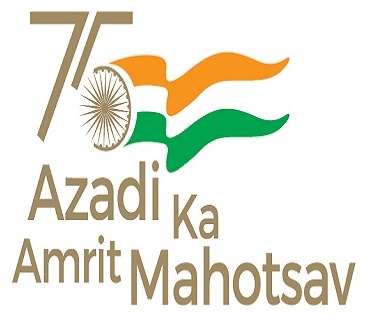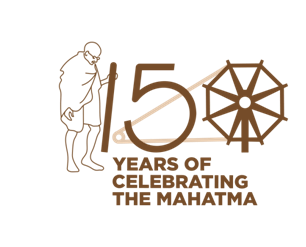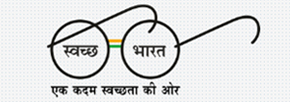The Urban Missions Division is a new division in TCPO formed by merging the erstwhile divisions of IDSMT and UIDSSMT. Presently this division is engaged in the monitoring and evaluation of reforms under the AMRUT Mission. This division has successfully completed the implementation and monitoring of Integrated Development of Small & Medium Towns (IDSMT) and Urban Infrastructure Development Scheme for Small and Medium Towns Scheme (UIDSSMT) of Ministry of Housing & Urban Affairs. This division has been entrusted with the job of Appraising of Project Reports, processing for release of ACA, scrutiny of MOAs, monitoring of Projects, examining of QPR, coordination with Ministry and State Government, collating and providing information/data to the Ministry of Housing & Urban Affairs, attending to Parliament Questions, status note to Parliamentary Standing Committees, preparation of Annual Budget, Performance Budget, Reply to Court cases, PIL, Legal Notices etc. in reference to Centrally sponsored UIDSSMT Scheme under the Jawaharlal Nehru Urban Renewal Mission, IDSMT and AMRUT -Reforms..
This Division is headed by Town & Country Planner and assisted by Two Associate Town & Country Planners, One Research Officer, One Research Assistant and Four Planning Assistants.
Ministry of Urban Development, Govt. of India has launched Atal Mission for Rejuvenation and Urban Transformation (AMRUT) on 25th June, 2015 to provide the national priority basic services for e.g. water supply, sewerage, urban transport to households and build amenities in cities which will improve the quality of life for all, especially the poor and the disadvantaged. A set of Reforms and Capacity Building have also been included in the Mission. The Mission mandates a set of 11 Reforms which have to be implemented by all the States and 500 Mission cities within a period of 4 years.
Till now evaluation has been done for 3 years and incentives have been distributed by the ministry to the states. Under AMRUT scheme, out of all 36 states and UTs during 2015-16, 23 states submitted claim for incentives and 20 states qualified. During 2016-17, out 24 states claimed for incentive, 16 states qualified and in 2017-18, 23 states claimed for incentives out of which 21 states qualified for incentives. The reforms implementation are at various stages and expected to be completed in the mission period 2015-2020. These AMRUT reforms are to be implemented to enhance transparency, governance and quality service delivery with improved environmental conditions in cities. The reforms which account for Good governance, accountability, service delivery and improved environmental conditions.Broadly covered – Municipal Governance, Finance, Municipal service delivery, and Environment.etc.
Money Released to States and Out -Come of Reforms:
• A sum of Rs. 1240 crore awarded as incentive to 21 States in first three years . The details are as under:
• Rs.400 crore has been awarded as incentive to 20 States for reforms implemented in 2015-16
• Rs.500 crore to 16 States for reforms implemented in 2016-17.
• Rs.340 crore has been awarded as incentives to 21 States for reforms implemented in 2017-18
• E- governance: The reforms aims at Improving Citizen Service delivery and Good Governance in ULBS
• Urban Planning and City level Plans: This reforms improve the Environmental and living conditions in Cities.
• Review of Building by- laws: Improved Service Delivery, Planned development, environmental improvement and construction of safe buildings.
• Energy and Water audit: .Energy saving and Reduction in Carbon Foot print.
• Swach Bharat Mission: Improvement in Environment and sanitation and health of citizen.
The Atal Mission for Rejuvenation and Urban Transformation (AMRUT)- Reforms
Ministry of Housing & Urban Affairs, Govt. of India has launched Atal Mission for Rejuvenation and Urban Transformation (AMRUT) on 25th June, 2015 to provide the national priority basic services for e.g. water supply, sewerage, urban transport to households and build amenities in cities which will improve the quality of life for all, especially the poor and the disadvantaged.
A set of Reforms and Capacity Building have also been included in the Mission. The Mission mandates a set of 11 Reforms which have to be implemented by all the States and 500 Mission cities within a period of 4 years.
The reforms are at various stages implementation and expected to be completed in the mission period 2015-2020. The AMRUT reforms are to be implemented will Improve transparency, governance and delivery of quality service with improved environmental conditions in cities. These reforms also accounts for the Good governance, accountability, service delivery system and improved environmental conditions. These broadly covered– Municipal Governance, Finance, Municipal service delivery, and Environment etc .As per AMRUT budget Mission statement /guidelines a provision of 10% as a incentives is earmarked in budget for the States which implement these reforms. The List of 11 set of Reforms an 54 Mile stones as per AMRUT Mission Statement , 2015 which are to be implemented by states /UTs is as under:
List of Reforms Milestones and Timelines for AMRUT Cities (As per AMRUT Guidelines ,2015
| S.No |
Type |
Milestones |
Implementation timeline |
|---|
| 1 |
E-Governance |
Digital ULBs
- Creation of ULB website.
- Publication of e-newsletter. Digital India Initiatives
- Support Digital India (ducting to be done on PPP mode or by the ULB itself).
|
6 months
6 months
6 months
|
Coverage with E-MAAS (from the date of hosting the software)
- Registration of Birth, Death and Marriage,
- Water & Sewerage Charges,
- Grievance Redressal,
- Property Tax,
- Advertisement tax,
- Issuance of Licenses,
- Building Permissions,
- Mutations,
- Payroll,
- Pension,
|
24 months |
- e-procurement,
- Personnel Staff management and
- Project management.
|
36 months |
| 2 |
Constitution and professionalization of municipal cadre |
- Establishment of municipal cadre.
- Cadre linked training.
- Policy for engagement of interns in ULBs and implementation.
- The State will prepare a Policy for Right-sizing the number of municipal functionaries depending on, say, population of the ULB, generation of internal resources and expenditure on salaries.
|
24 months
24 months
12 months
36 months
|
| 3 |
Augmenting double entry accounting |
- Complete migration to double entry accounting system and obtaining an audit certificate to the effect from FY2012-13 onwards.
- Appointment of internal auditor.
- Publication of annual financial statement on website.
|
12 months
24 months
Every year |
| 4 |
Urban Planning and City level Plans |
- Preparation of Master Plan using GIS.
- Preparation of Service Level Improvement Plans (SLIP), State Annual Action Plans (SAAP).
- Establish Urban Development Authorities.
- Make action plan to progressively increase Green cover in cities to 15% in 5 years.
- Develop at least one Children Park every year in AMRUT cities.
- Establish a system for maintaining of parks, playground and recreational areas relying on People Public Private Partnership (PPPP) model.
- Make a State level policy to implement the parameters given in National Mission for Sustainable Habitat.
|
48 months
6 months
36 months
6 months
Every Year
12 months
24 months |
| 5 |
Devolution of funds and functions |
- Ensure transfer of 14th FC devolution to ULBs.
- Appointment of State Finance Commission (SFC) and making decisions.
- Implementation of SFC recommendations within timeline.
- Transfer of all 18 functions to ULBs.
|
6 months
12 months
18 months
12 months
|
| 6 |
Review of Building by-laws |
- Revision of building bye laws periodically.
- State to formulate a policy and action plan for having a solar roof top in all buildings having an area greater than 500 square meters and all public buildings.
- State to formulate a policy and action plan for having Rain water harvesting structures in all commercial, public buildings and new buildings on plots of 300 sq. meters and above.
- Create single window clearance for all approvals to give building permissions.
|
12 months
12–24 months
12–24 months
12 months
|
| 7 |
Set-up financial intermediary at state level |
- Establish and operationalize financial intermediary- pool finance, access external funds, float municipal bonds.
|
12-18 months |
| 8(a) |
Municipal tax and fees improvement |
- Atleast 90% coverage,
- Atleast 90% collection,
- Make a policy to, periodically revise property tax, levy charges and other fees,
- Post Demand Collection Book (DCB) of tax details on the website,
- Achieve full potential of advertisement revenue by making a policy for destination specific potential having dynamic pricing module.
|
12 months |
| 8(b) |
Improvement in levy and collection of user charges |
- Adopt a policy on user charges for individual and institutional assessments in which a differential rate is charged for water use and adequate safeguards are included to take care of the interests of the vulnerable,
- Make action plan to reduce water losses to less than 20 % and publish on the website,
- Separate accounts for user charges,
- Atleast 90% billing
- Atleast 90% collection.
|
12 months |
| 9 |
Credit Rating |
- Complete the credit ratings of the ULBs
|
18 months |
| 10 |
Energy and Water audit |
- Energy (Street lights) and Water Audit (including non- revenue water or losses audit),
- Making STPs and WTPs more energy efficient,
- Optimize energy consumption in street lights by using energy efficient lights and increasing reliance on renewable energy,
- Give incentives for green buildings (e.g. rebate in property tax or charges connected to building permission/ development charges)
|
12 months
12 months
12 months
24 months
|
| 11 |
Swachh Bharat Mission |
- Elimination of open defecation,
- Waste Collection (100%),
- Transportation of Waste (100%).
- Scientific Disposal (100%).
|
36 months |
Urban Infrastructure Development Scheme for Small and Medium Towns Scheme (UIDSSMT) Mission launched on 5th March, 2012 later the scheme was extended for another 2 years as Transition phase to complete ongoing projects. In June 2015 the Scheme was subsumed in to AMRUT. sub mission of Jawaharlal Nehru National Urban Renewal Mission (JNNURM) for 7 years Mission period up to 31st Dec, 2005 as a
During Main Phase of Mission period 801 Projects and Transition phase 235 Projects total to 1036 projects were approved and ACA of Rs. 10041.36 Cr for 801 projects and Rs. 3692.45 cr. for 235 Projects was released. From AMRUT fund 31 ongoing UIDSSMT projects were assisted and ACA of Rs. 437.52 Cr. was released in 2017-18. Total cumulative Additional Central Assistance of Rs 14,171.33 Cr were released for 1036 Projects. Total 466 projects have been physically completed which includes 297 water supply, 18 Sewerage, 33 Storm water drains, 18 solid waste management, 7 urban renewal, 8 preservation of water body, 83 roads & 1 each parking and prevention of soil erosion.
The Objectives of the scheme were as under :
- Improve infrastructural facilities in towns & cities
- Urban sector reforms at state & ULB level
- Enhance public-private-partnership in infrastructural development
- Promote planned integrated development of towns / cities
The total population of the country has increased from 361 million in 1951 to 1027 million in 2001, whereas, urban population has increased from 62 million to 285 million during the same period. The number of metropolitan cities has increased from 23 in 1991 to 35 in 2001. Thus, it is, evident that there was a clear shift towards large towns, perhaps due to lack of employment opportunities and poor urban infrastructural base of the small and medium towns. The Centrally sponsored scheme of Integrated Development of Small & Medium Towns (IDSMT) was initiated in the year 1979 80 and is continued with timely amendments and modifications upto2004-2005 and in December 2005 it was subsumed in UIDSSMT Scheme. Investment in the development of small urban centres would help in reducing migration to large cities and support the growth of surrounding rural areas as well.
Objectives of IDSMT:
The main objectives of IDSMT scheme are:
- Improving infrastructural facilities and helping in the creation of durable public assets in small and medium towns.
- Decentralizing economic growth and employment opportunities and promoting dispersed urbanization.
- Increasing the availability of serviced sites for housing, commercial and industrial uses.
- Integrating spatial and socio-economic planning as envisaged in the Constitution (74th Amendment) Act, 1992.
- Promoting resource generating schemes for the urban local bodies to improve their overall financial position.
Selection of towns:
- IDSMT Scheme will be applicable to towns/cities with population upto 5 lakhs.
- Towns are to be identified and prioritized by the State Governments and UTs according to their Urban Strategy within the framework of Guidelines of the Scheme.
- The IDSMT Scheme will be applicable to only those towns where elections to the local bodies have been held and elected bodies are in position.
Components for Funding
- Strengthening of Master Plan road facilities including ring, arterial, bypass/link roads and small bridges,
- Sites and services,
- Development of bus/truck terminals,
- Construction/upgradation of Master Plan drains including Storm water channels,
- Solid waste management
- Development of market complexes/shopping centers,
- Provision of tourist facilities,
- Development of City/Town Parks
- Street lighting for Master Plan roads,
- Slaughter houses,
- Major public amenities like Gardens, Playgrounds, Marriage halls, Pay and use toilets, etc.
- Cycle/Rickshaw stands,
- Traffic improvement and management schemes,
- Construction of retaining walls and slope stability measures in hill station towns,
- Social amenities, especially for the poorer sections.
Funding pattern
Central assistance and State share provided under IDSMT scheme to the local bodies is in the form of grant.
| Category of Town (Population) |
Project Cost Maximum |
Central Assistance (Grant) |
State Share (Grant) |
HUDCO/Financial Institutional Loan/Other Sources |
|---|
| A (< 20000) |
100 |
48 |
32 |
20 (20%) |
| B (20000‑50000) |
200 |
90 |
60 |
50 (25%) |
| C (50000‑100000) |
350 |
150 |
100 |
100 (29%) |
| D (1 – 3 Lakhs) |
550 |
210 |
140 |
200 (36%) |
| E (3 – 5 Lakhs) |
750 |
270 |
180 |
300 (40%) |
To enable the preparation of project reports under IDSMT Scheme grant-in-aid will be available to State Governments/Municipalities on 60(Central grant) : 40(state grant) basis with total cost restricted to Rs.3.00 lakh to towns with population up to 50000, Rs.4.00 lakh for towns with population between 50000 and 1 lakh, Rs.5.00 lakh for towns with population between 1 and 3 lakhs and Rs.6.00 lakhs for towns with population between 3 and 5 lakhs under the Central Urban Infrastructure Support Scheme (CUISS).
Appraisal and processing
The State Government/UTs have to prepare and send detailed project report in the prescribed format to the Town and Country Planning Organisation (TCPO) for scrutiny and appraisal.The State Level Sanctioning Committee (SLSC) considers appraisal reports prepared by TCPO and recommends for release of central assistance to the Government of India.
Implementation status report Download
 Government of India
Government of India 
























